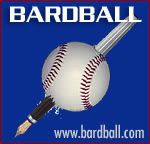LaTroy Story
I've been asked to provide a bit of analysis on the Cubs' recent trade of righthanded reliever LaTroy Hawkins. Chicago sent the 32-year-old Hawkins to the San Francisco Giants on Saturday in exchange for two 23-year-old righthanded pitchers, Jerome Williams and David Aardsma.
The Cubs had to pick up nearly all of Hawkins' 2005 salary of $4.35 million; the Giants will pay Hawkins that same amount if Hawkins exercises his player option for 2006. Since coming to Chicago in 2004, Hawkins has been a setup man, closer, and, recently, a mopup reliever.
Jerome Williams, a 39th-round draft pick in 1999, fashioned a 10-7 mark last year for the Giants; in his 43 major league games, all starts, he is an impressive 17-12 with a 3.77 ERA. This spring, he didn't have much time to pitch; he spent much of March with his ailing father, then started the season at Triple-A. The Cubs have sent Williams to their Triple-A club in Iowa, but would like him to be in the majors soon.
Aardsma, a first-round pick in 2003, was a star relief pitcher at Rice University and pitched in 11 games last year for San Francisco. The Giants sent him to Double-A this spring and converted him to starting, where he was 6-2 before the deal. It's not clear, even to the Cubs, whether Aardsma is going to be a starter, middleman, setup man, or closer.
Those are the facts. But what do they all mean?
My opinion is that Hawkins got a raw deal. Most every closer in baseball goes through rough stretches. While every team would love to have the 2004 version of Eric Gagne, the facts are that most pitchers, even the good closers, just aren't that dominating. Much was made of Hawkins' lousy record in one-run games; in fact, his career record in those situations is 18-for-24. That's 75 percent, and that's well within the realm of "acceptable to good." (And if the Cubs had a better offense, they wouldn't be worried about protecting so many damn one-run leads.)
Hawkins' failures came in short stretches and at memorable times. Had he not gotten off this season on the wrong foot, Chicago would have almost certainly lived with him; it's much easier to justify a mid-season slump than one in April. Watch what happens when Ryan Dempster sags this summer, or Dustin Hermanson on the South Side soon reverts to being, well, Dustin Hermanson.
Remember that Hawkins never campaigned for the closer's role. He never WANTED the job, and only took it because his manager asked him to. It's not Hawkins' fault that Jim Hendry whole-heartedly embraces the strategy of bottom-feeding for bench players and relief pitchers. Cub "fans" who took LaTroy Hawkins' struggles personally, booing him, cursing him, for God's sake, because he blew a few one-run leads, ought to look in the mirror. He tried as hard as he could, and it didn't work out.
Jerome Williams has four pitches: sinker, slider, curve, and change. His sinker has just slightly above average velocity, but moves well and induces ground balls. Williams' best pitch is his change-up; he has a good late break on his slider. He is prized for his intelligence, reluctance to give up walks, and ability to use patterns to keep hitters off balance. Scouts project him, conservatively, as a solid #4 starter. I think he could be better than that, assuming that he gets into game condition and that his cranky elbow stays healthy (this is a fairly big if, but Williams has not been overused so far in his career). He pitched well Tuesday night in his first Triple-A Cubs appearance.
David Aardsma is a very hard thrower, utilizing mostly sinkers and sliders. He is developing a change-up in order to expand his usability (unless they're knuckleballers, starters just don't survive without at least three pitches). While he was effective in college, Aardsma, as a late-inning reliever, just didn't pitch that much. As a result, he rarely experienced failure, and needs time in the minors to adjust to the inevitable struggles that will follow as hitters learn him and force him to make adjustments.
On an analytical basis, I love the trade. Bringing in young arms is a great strategy for a club that can't seem to keep its major-league pitchers off the disabled list. Trading a 32-year-old that you have no intention of using in a critical role for two 23-year-olds with reasonably high ceilings is also excellent strategy.
But emotionally, I'm not crazy about getting rid of Hawkins. Believe it or not, I'll miss him; he wasn't very good at mouthing the usual platitudes that sportswriters love, and that trait endeared him to me. Hawkins was respected by his teammates and pitched effectively when used correctly.
And in the end, he's just a scapegoat, really, of 1)a starting rotation that hasn't done the job, forcing overuse of the bullpen, 2)an offense that hasn't provided nearly enough runs, and 3)a manager and GM who haven't clearly formulated or communicated their plan to make this franchise as good on the field as it is on the bottom line.


